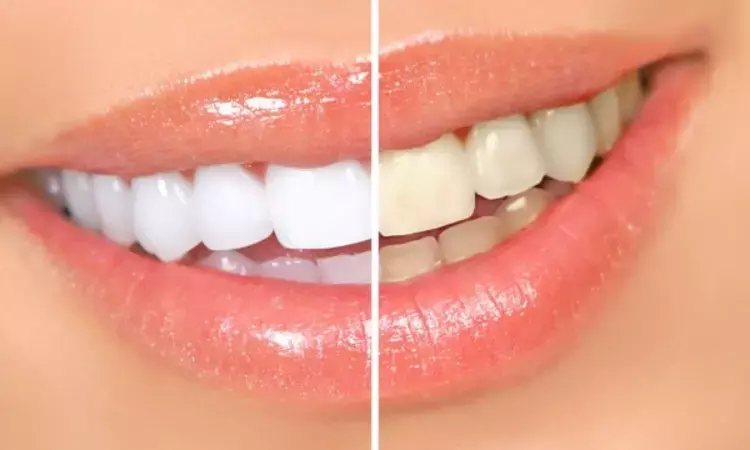- Home
- Medical news & Guidelines
- Anesthesiology
- Cardiology and CTVS
- Critical Care
- Dentistry
- Dermatology
- Diabetes and Endocrinology
- ENT
- Gastroenterology
- Medicine
- Nephrology
- Neurology
- Obstretics-Gynaecology
- Oncology
- Ophthalmology
- Orthopaedics
- Pediatrics-Neonatology
- Psychiatry
- Pulmonology
- Radiology
- Surgery
- Urology
- Laboratory Medicine
- Diet
- Nursing
- Paramedical
- Physiotherapy
- Health news
- Fact Check
- Bone Health Fact Check
- Brain Health Fact Check
- Cancer Related Fact Check
- Child Care Fact Check
- Dental and oral health fact check
- Diabetes and metabolic health fact check
- Diet and Nutrition Fact Check
- Eye and ENT Care Fact Check
- Fitness fact check
- Gut health fact check
- Heart health fact check
- Kidney health fact check
- Medical education fact check
- Men's health fact check
- Respiratory fact check
- Skin and hair care fact check
- Vaccine and Immunization fact check
- Women's health fact check
- AYUSH
- State News
- Andaman and Nicobar Islands
- Andhra Pradesh
- Arunachal Pradesh
- Assam
- Bihar
- Chandigarh
- Chattisgarh
- Dadra and Nagar Haveli
- Daman and Diu
- Delhi
- Goa
- Gujarat
- Haryana
- Himachal Pradesh
- Jammu & Kashmir
- Jharkhand
- Karnataka
- Kerala
- Ladakh
- Lakshadweep
- Madhya Pradesh
- Maharashtra
- Manipur
- Meghalaya
- Mizoram
- Nagaland
- Odisha
- Puducherry
- Punjab
- Rajasthan
- Sikkim
- Tamil Nadu
- Telangana
- Tripura
- Uttar Pradesh
- Uttrakhand
- West Bengal
- Medical Education
- Industry
At-Home Bleaching equally effective for Upper and Lower Dental Arches, suggests study

A new study published in the Journal of Dentistry unveiled a curious phenomenon in cosmetic dentistry that teeth whitening treatments may be more effective on upper canines when compared to their lower counterparts.
Teeth bleaching remains one of the most sought-after aesthetic dental procedures, designed to counter both external and internal tooth discoloration. Yet, dental professionals have long observed inconsistent results between upper and lower arches during treatment. This research assesses the role of sublingual salivary glands, which may increase saliva contamination of bleaching trays in the lower jaw which might accelerate the degradation of bleaching gel.
This prospective study included 32 participants with a standardized three-week at-home bleaching protocol using 16% carbamide peroxide gel. The research team monitored color changes weekly, employing objective color measurement systems: CIELAB, CIEDE2000, and the Whiteness Index for Dentistry (WID), through spectrophotometric analysis.
The results of this study found no statistically significant differences in whitening results between the upper and lower arches (p > 0.5) for incisors. However, disparities emerged when examining the canines, or eye teeth. By the second and third weeks of treatment, upper canines expressed significantly better bleaching results than their lower counterparts, with statistical significance confirmed using both the CIELAB and CIEDE2000 color difference formulas (p < 0.05).
Also, the WID formula for assessing tooth whiteness did not detect significant differences in any of the tooth groups studied, suggesting that while instrumental measurements show variations, these differences may not be easily noticeable in everyday interactions.
The average color difference (ΔE) values in upper canines increased more rapidly than those in lower canines during the second and third weeks, indicating more pronounced lightening. The largest gap was observed during week three, coinciding with the phase when bleaching trays tend to show diminished gel efficacy.
Despite the statistical variances, the study concludes that the slightly reduced bleaching effect in lower canines is not clinically visible, confirming that both arches benefit substantially from carbamide peroxide-based treatments. Overall, these findings may prompt dental professionals to tailor bleaching regimens more precisely and consider anatomical and physiological differences when planning treatments.
Source:
Pereira-Lores, P., Gancedo-Gancedo, T., Martín-Biedma, B., Varela-Aneiros, I., Dablanca-Blanco, A. B., Villasenín-Sánchez, C., Martín-González, J., Alonso de la Peña, V., & Castelo-Baz, P. (2025). Is at-home bleaching more effective on the upper arch than the lower arch? A prospective cohort study. Journal of Dentistry, 157(105729), 105729. https://doi.org/10.1016/j.jdent.2025.105729
Neuroscience Masters graduate
Jacinthlyn Sylvia, a Neuroscience Master's graduate from Chennai has worked extensively in deciphering the neurobiology of cognition and motor control in aging. She also has spread-out exposure to Neurosurgery from her Bachelor’s. She is currently involved in active Neuro-Oncology research. She is an upcoming neuroscientist with a fiery passion for writing. Her news cover at Medical Dialogues feature recent discoveries and updates from the healthcare and biomedical research fields. She can be reached at editorial@medicaldialogues.in
Dr Kamal Kant Kohli-MBBS, DTCD- a chest specialist with more than 30 years of practice and a flair for writing clinical articles, Dr Kamal Kant Kohli joined Medical Dialogues as a Chief Editor of Medical News. Besides writing articles, as an editor, he proofreads and verifies all the medical content published on Medical Dialogues including those coming from journals, studies,medical conferences,guidelines etc. Email: drkohli@medicaldialogues.in. Contact no. 011-43720751


